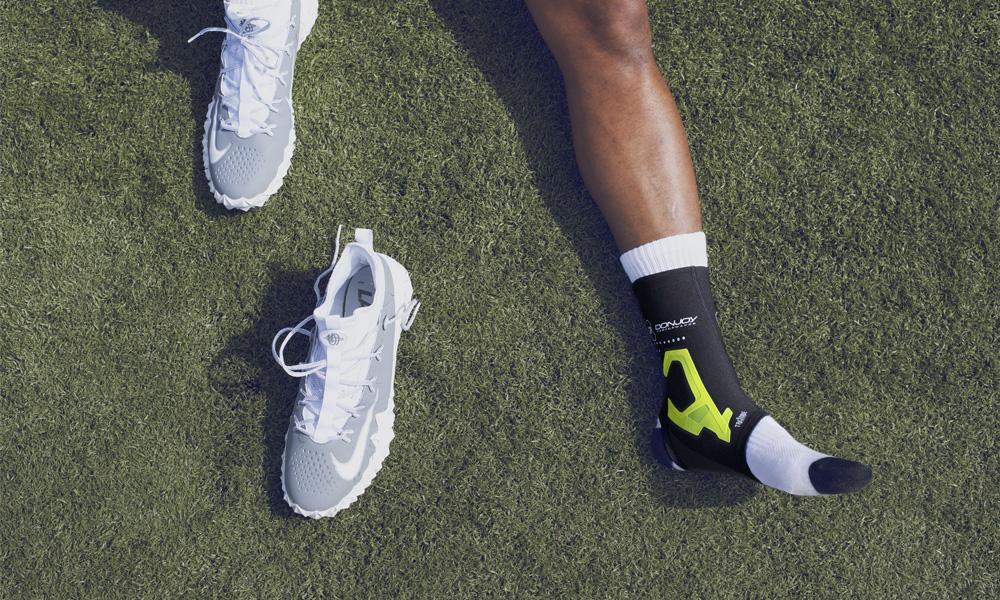Rest Day vs. Active Recovery

Feeling sore? Whether it's a sign of a good workout or some sort of injury, you may be familiar with the terms rest day and active recovery.
While both are good for optimal recovery, it's often misunderstood what's the difference and when to use a rest day versus an active recovery. Here's the deal, your body needs rest to recover and gain strength from a hard workout or intense game. Both rest and active recovery are both tools you can use to reach your athletic goals.
Here's a breakdown of the two and when it's suggested to use one or the other. Of course, it's always recommended to speak with a professional about your recovery regimen depending on your training and/or injuries.
What Is Rest Day?
A rest day is just that, rest. A rest day doesn't include any kind of exercise. This is a great time to sleep in, run errands, spend time with friends and family, or do light housework. It's a time to allow your body to heal from your rigorous workout schedule.
If you're injured, a rest day might be recommended from your doctor to take the load and pressure off the injury.
What is Active Recovery?
Active recovery is a form of recovery that still requires you to move. It's like gentle cross-training. You're not doing a hard workout, but you can do a light cross-training workout. It's an easy to moderate intensity, low- to no-impact activity that gets your blood moving. Consider doing yoga, swimming, light strength training or light cycling to complement the demands of your high-impact workouts.
If you're recovering from an injury, sore or stiff, light movement such as active recovery, can help loosen up tight muscles or regain muscle strength. Again, speak with your doctor when it's safe to take part in activity if dealing with an injury.
Optimal recovery includes both rest and active recovery. The key is to add a few tough workouts each week with a few easy and moderate activity to balance out and avoid muscle overuse.
Dealing with discomfort? Use our brace advisor to find the right brace for you.
The contents of this blog were independently prepared, and are for informational purposes only. The opinions expressed herein are those of the author and are not necessarily indicative of the views of any other party. Individual results may vary depending on a variety of patient-specific attributes and related factors.
Sources
- Pickleball Injuries: What Doctors Say, and How to Prevent Them
- Bigger, “Badder,” Better: Introducing the New DonJoy® Store Website
- Official Rules: Enter to Win the DonJoy Performance® 2019 Holiday Trizone® Giveaway
- Official Rules: Enter to Win the DonJoy Performance® 2019 Holiday POD® Giveaway
- How Pro Lacrosse Athlete, Kyle Harrison, Warms Up
- Aircast
- Ankle
- ankle brace
- Arm Immobilizers
- Back
- Back Brace
- Baseball
- Basketball
- Cervical Collar
- Cold Therapy
- Compex
- Cycling
- Dance
- DonJoy
- Elbow
- Elbow Brace
- Feet
- Foot
- Football
- Golf
- Health & Wellness
- Health and Wellness
- Hockey
- HyperIce
- Injuries
- Injury Prevention
- Knee
- Knee Brace
- Leg
- Neck
- New Products
- News
- Orthopedic Shoes
- Osteoarthritis (OA)
- Pain
- Pickleball
- ProCare
- Product
- Recovery
- Running
- Shoes
- Shoulder
- Shoulder Brace
- Skiing
- Snowboarding
- Soccer
- Sports
- Surfing
- Swimming
- Team
- Tennis
- thumb brace
- Training
- Uncategorized
- Volleyball
- walking braces
- Weightlifting
- Wrist
- wrist brace




